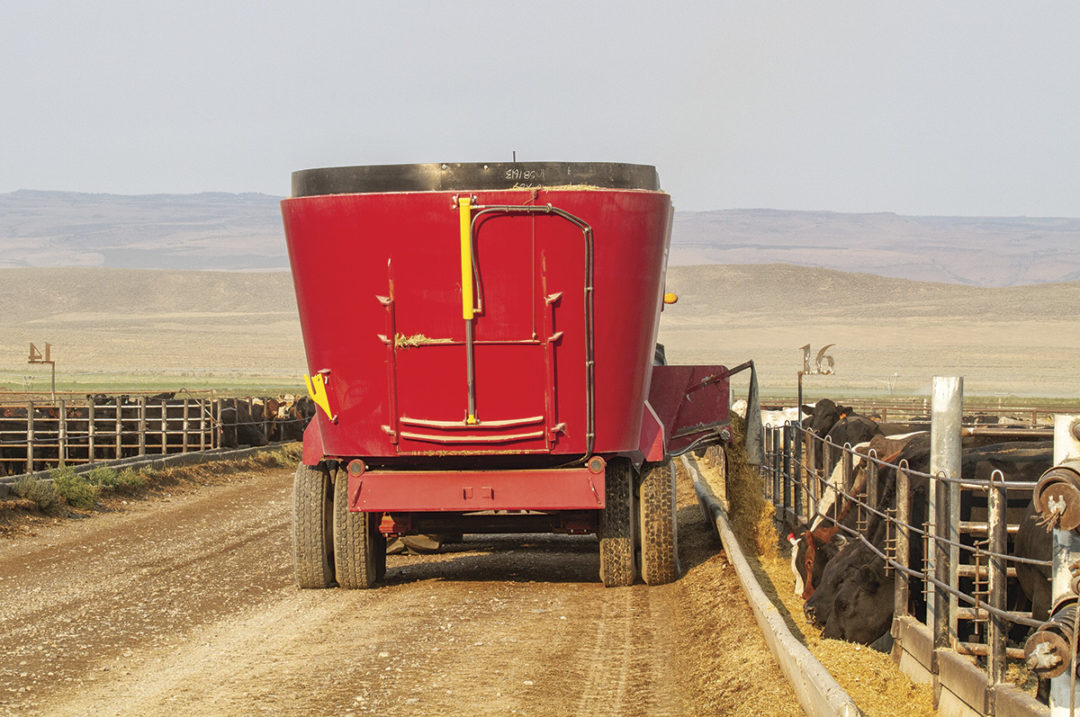As the much-anticipated lull in calf numbers settles down upon us, flashbacks to middle school lessons on supply and demand jog our memory as cattle prices continue to soar to new highs each month. With these near-record calf prices comes a difficult decision for many beef producers: continue to invest or begin to cut corners. See, on top of the costly buy-in required just to sit at the cattle market table in 2023 come the variable input costs still needed to maintain and grow your investment.
As many producers begin to cringe at the rising cost of these four-legged critters, some may decide to start cutting back on “extra” expenses in hopes of lessening the short-term blow to their pocketbook. Others will decide to maintain the same level of production management that over the years has continued to improve the health and production of their animals. So regardless if you’re keeping next year’s replacement females or buying grass calves or yearlings, this same decision will soon be weighing on your mind – "Do I roll the dice and gamble with the health and performance of my future, or do I continue the age-old practices that built my operation up to where it is today?"
When producers begin evaluating the largest contributors to their annual input costs, almost always, individual costs associated with nutrition and herd health rank near the top. Tally all expenses tied back directly to feed costs and nutrition and you have equated nearly 75% of that animal’s annual cost. Recent softening in grain commodity prices should put a grin on the faces of cattle producers as a welcomed break from the last few years of costly feed prices. Yet expenses related to production – including machinery, fuel, land, labor and interest – have yet to show signs of faltering. These rising costs on top of the already costly animal may have some producers thinking they’re backed into a corner, with the only answer being to try and cut their feed expenses to remain profitable throughout the coming year. Still, minimizing feed costs shouldn’t be done at the expense of impeding your cattle’s health and performance, as these decisions may haunt your operation’s production in the years to come.
Following are several management strategies aimed at optimizing production through program management.
Balanced rations
Feeding a balanced ration formulated to produce the type and weight of cattle you’re wanting to grow is essential in optimizing the production of the cattle in your operation. The initial cost of working closely with a seasoned beef nutritionist is made up for by the ability to quickly adjust your rations depending on feed quality and availability, nutritional requirements and seasonal weather events, and to continue a feeding strategy at the lowest cost possible.
Stored feedstuffs
Ingredient storage losses can add up to some large numbers if producers are not careful, ranging from the low single digits on well-managed facilities to upwards of 30% to 40% on poorly managed operations. Covering both wet and dry feeds can help eliminate losses associated with shrink over time, while forage inoculants can further reduce dry matter losses while also improving silage stability at feedout. The proper silage inoculant for your specific needs helps ensure speedy fermentation, dry matter and nutrient preservation and aerobic stability, and reduces top-layer spoilage.
Feeding management
Close management of your timely delivered ration into feedbunks will improve your bottom line by reducing losses associated with sorting and waste. This will also help eliminate variations in an individual animal’s ration intake of the feed consumed, thus improving the efficiency of the cattle and contributing to their overall performance and health. Utilizing a slick-bunk management style can aid in reducing feed waste while optimizing animal feed costs and helping eliminate digestive upsets associated with ruminal acidosis. Proper mixing and delivery times, along with accurately weighing individual feed ingredients, all fall under the umbrella of feed management and are vital to the success of your operation.
Feed additives
Feed additives cover all feed-through products that offer health and performance benefits to the animal. These include ionophores that improve feed efficiency by improving rumen fermentation and decreasing the incidence of bloat and acidosis. Similarly, direct-fed microbials (probiotics) have shown improvements in rumen fermentation on both forage and concentrate diets, resulting in improved feed efficiency and return on investment. As annual production costs continue to rise, incremental improvements in feed efficiency boost your bottom line and payout. Bacteria-based probiotics also decrease pathogenic bacteria in the gut, aiding in diarrhea control in young calves and contributing to the reduction of food safety pathogens in fed cattle.
Health program
Working with local veterinarians to establish or continue a year-round herd health program will ultimately pay big dividends in the long run for your cattle operation. Up-to-date vaccination protocols will ensure that your calves’ immune systems are ramped up and ready for anything that might come in their path, resulting in few costs associated with treatments with antibiotics or dead cattle.
With rising calf prices, now is not the time to cut corners. Utilizing these management strategies, plus the addition of daily feeding of a science-based, research-proven probiotic, will greatly improve the long-term success of your operation.









